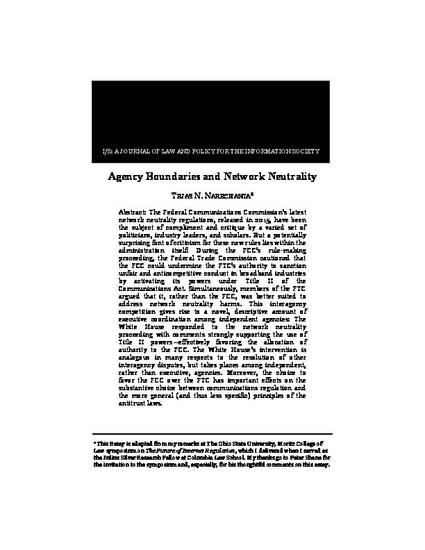
Article
Agency Boundaries and Network Neutrality
I/S Journal of Law and Policy for the Information Society
(2015)
Abstract
The Federal Communications Commission’s latest network neutrality regulations, released in 2015, have been the subject of compliment and critique by a varied set of politicians, industry leaders, and scholars. But a potentially surprising font of criticism for these new rules lies within the administration itself: During the FCC’s rule-making proceeding, the Federal Trade Commission cautioned that the FCC could undermine the FTC’s authority to sanction unfair and anticompetitive conduct in broadband industries by activating its powers under Title II of the Communications Act. Simultaneously, members of the FTC argued that it, rather than the FCC, was better suited to address network neutrality harms. This interagency competition gives rise to a novel, descriptive account of executive coordination among independent agencies: The White House responded to the network neutrality proceeding with comments strongly supporting the use of Title II powers—effectively favoring the allocation of authority to the FCC. The White House’s intervention is analogous in many respects to the resolution of other interagency disputes, but takes places among independent, rather than executive, agencies. Moreover, the choice to favor the FCC over the FTC has important effects on the substantive choice between communications regulation and the more general (and thus less specific) principles of the antitrust laws.
Keywords
- network neutrality,
- FCC,
- FTC,
- antitrust,
- regulation,
- independent agency,
- independent agencies,
- executive agency,
- executive agencies
Disciplines
Publication Date
2015
Citation Information
Tejas N. Narechania, Agency Boundaries and Network Neutrality, 12 I/S Journal of Law and Policy for the Information Society 59 (2015)
